- Share
- Like
- Tweet
- Digg
- Tumblr
- VKontakte
- Love This
- Odnoklassniki
- Meneame
- Blogger
- Amazon
- Yahoo Mail
- Gmail
- AOL
- Newsvine
- HackerNews
- Evernote
- MySpace
- Mail.ru
- Viadeo
- Line
- Comments
- SMS
- Viber
- Telegram
- Subscribe
- Skype
- Facebook Messenger
- Kakao
- LiveJournal
- Yammer
- Edgar
- Fintel
- Instapaper
- Copy Link
Toronto based firm Dubbeldam Architecture + Design transformed a 125-year old home, into a modern, up-to-date residence. Located on a corner lot in a dense Toronto neighbourhood, the Contrast House aimed to increase natural light in the interior using contrast, as well as to reduce the house’s ecological impact.

Image Courtesy of Dubbeldam Architecture + Design
The architects accomplished their goal to increase natural light through physical and perceptual means. Physically, the architects had to reconfigure the extremely narrow house – only 11 feet wide on the rear façade – in order to allow direct natural light from the new window openings.

Image Courtesy of Dubbeldam Architecture + Design
Perceptually, contrast was used as a means to “brighten” internal spaces without direct access to natural light. Contrasting elements are placed in proximity to produce an intensified effect.
– Dubbeldam Architecture + Design
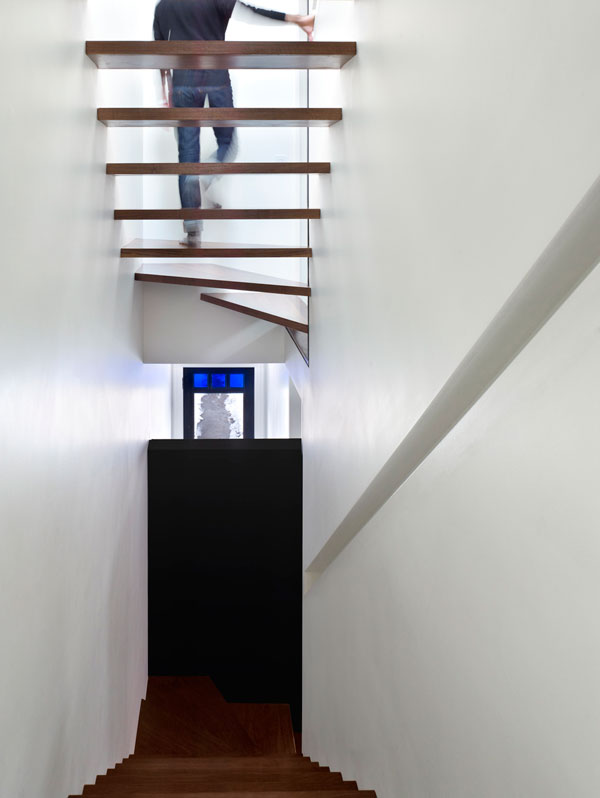
Image Courtesy of Dubbeldam Architecture + Design
The interior is dominated by the concept of “contrast”. The architects cleverly introduced elements that support the concept, and add visual interest. At each level, the stair is punctuated by a black element that defines the space. From the use of floating bookcases housing the owner’s collectibles, to chalk board walls for play, the contrast of elements visually intensifies the natural light “spilling down from above”.

Image Courtesy of Dubbeldam Architecture + Design
The colour palette of the house was kept monochromatic. The use of walnut floors against the white and dark grey walls, highlights the architectural forms and lines. Colour is brought into the space through the use of colourful furniture, art, books and toys.

Image Courtesy of Dubbeldam Architecture + Design

Image Courtesy of Dubbeldam Architecture + Design
The tonalities and concept flows from inside to out. Clad in black-stained cedar vertical boards soaring upward to conceal the modest roof deck behind, the exterior is a bold counterpoint to the red brick Victorian dwelling to which it is attached.

Image Courtesy of Dubbeldam Architecture + Design
The design used many passive sustainable systems to minimize environmental impact. The house was completely reconfigured in terms of layout, location of stairs, and new operable windows, all in aid to maximize natural ventilation, stack effect, and daylighting. All these changes reduce the need for both air conditioning, and artificial lighting. The residence also features a green roof that absorbs rainwater and provides a cooling effect for the upper floors, further reducing the dependency of utilities.
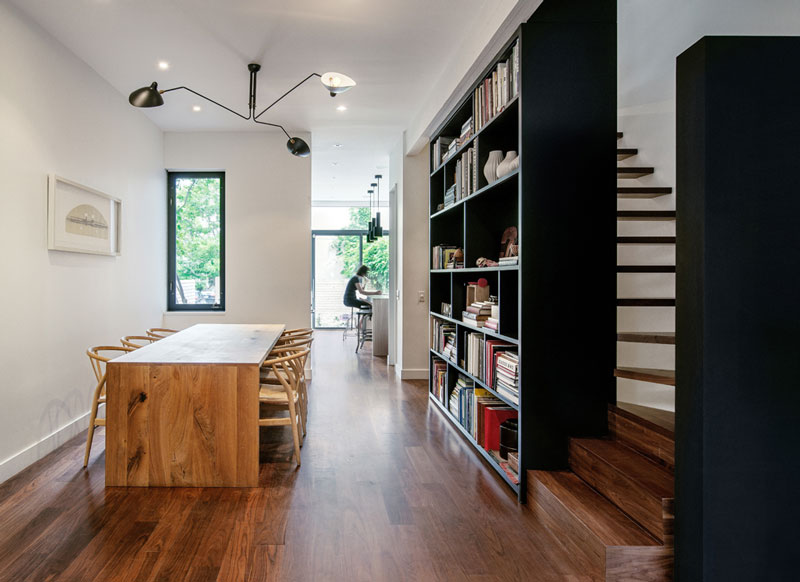
Image Courtesy of Dubbeldam Architecture + Design

Image Courtesy of Dubbeldam Architecture + Design
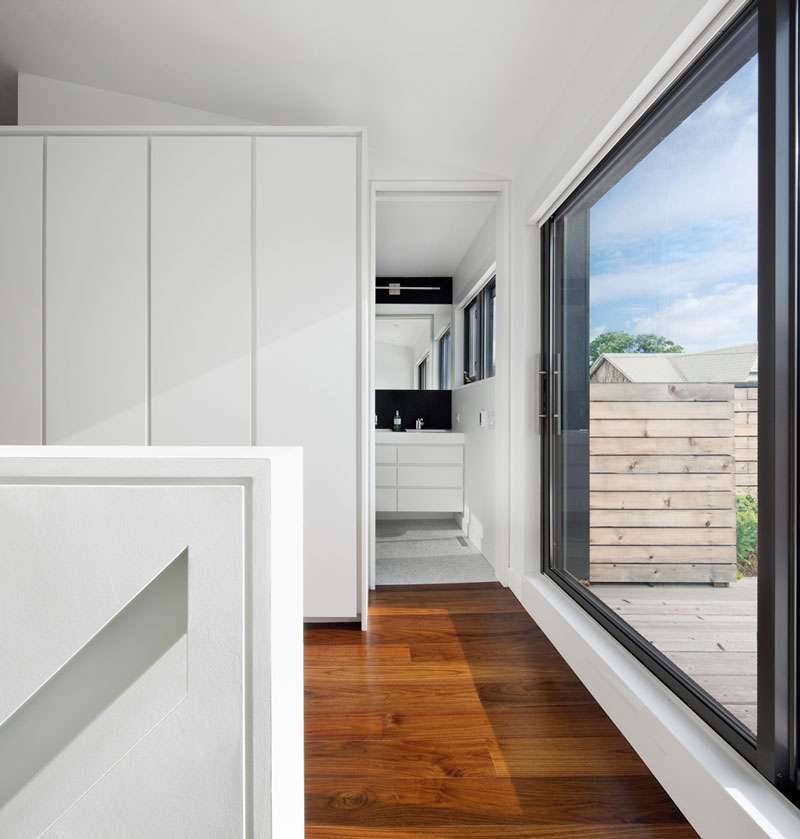
Image Courtesy of Dubbeldam Architecture + Design

Image Courtesy of Dubbeldam Architecture + Design
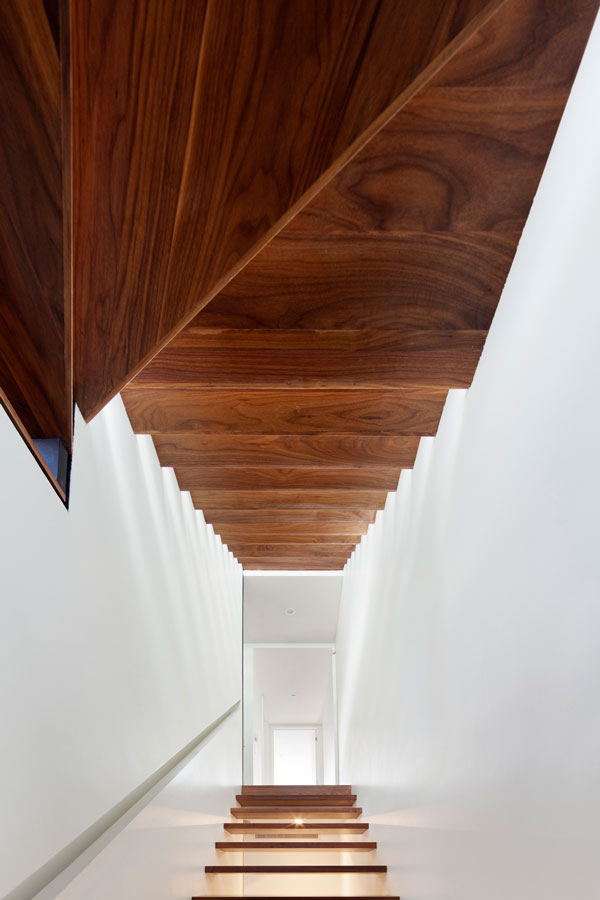
Image Courtesy of Dubbeldam Architecture + Design

Image Courtesy of Dubbeldam Architecture + Design
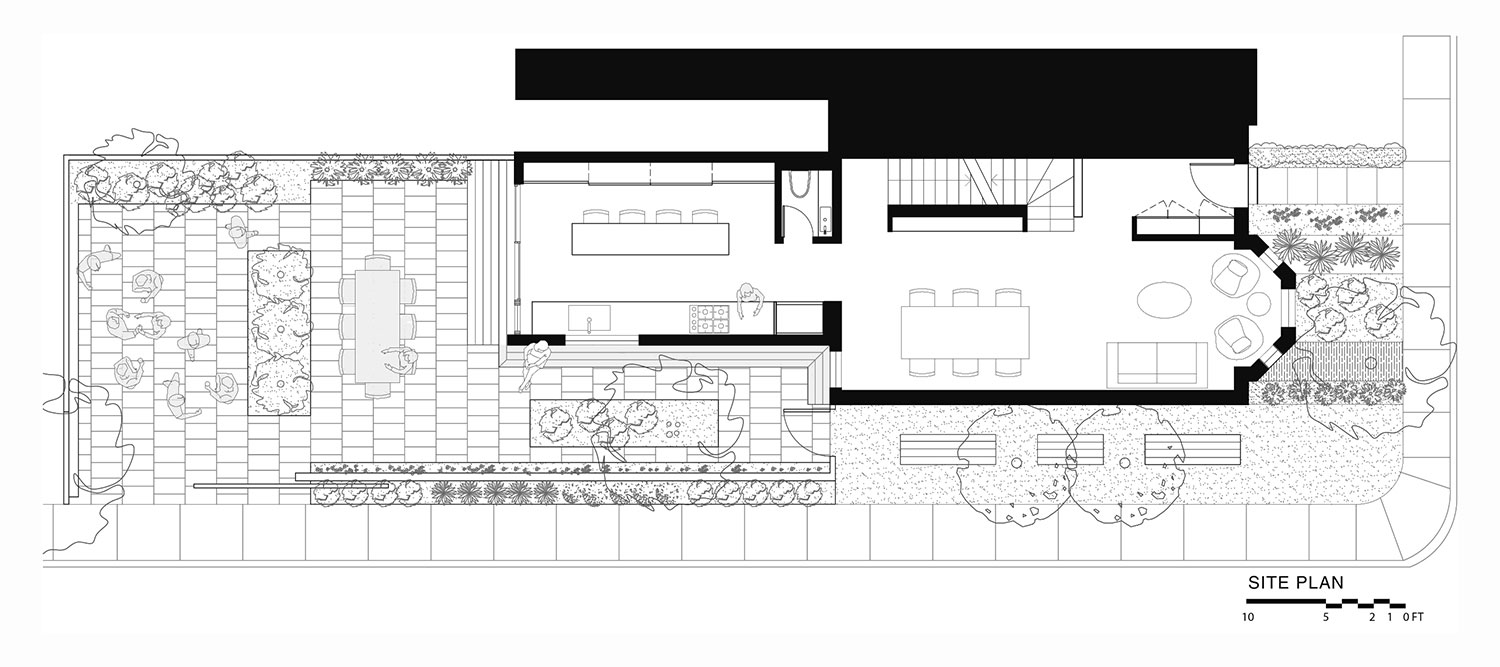
Image Courtesy of Dubbeldam Architecture + Design
Facts:
Architect: Dubbeldam Architecture + Design
Location: Toronto, Ontario
Completed: 2012
Area: 1,850 sq. ft.
Project Team: Heather Dubbeldam, Oliver Dang, Jacob JeBailey, Bindya Lad, Rachel Tameriao
Photography: Tom Arban and Bob Gundu
*All images and information courtesy of Dubbeldam Architecture + Design.
